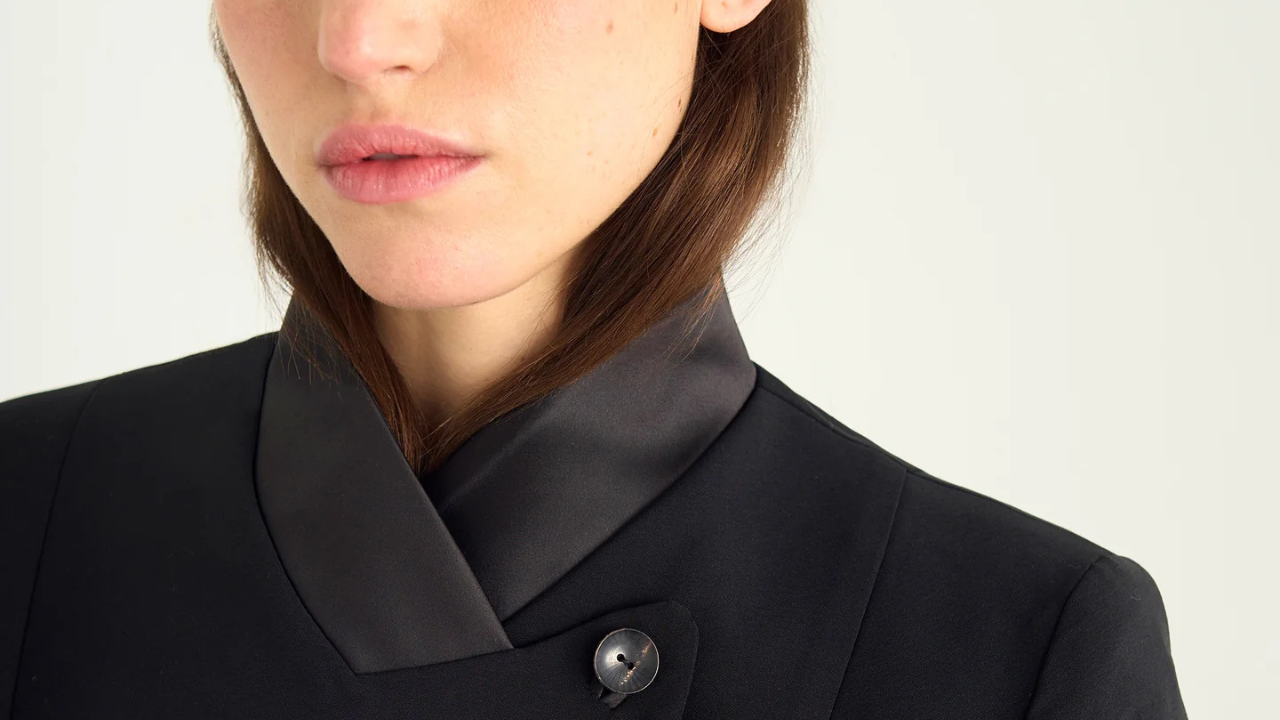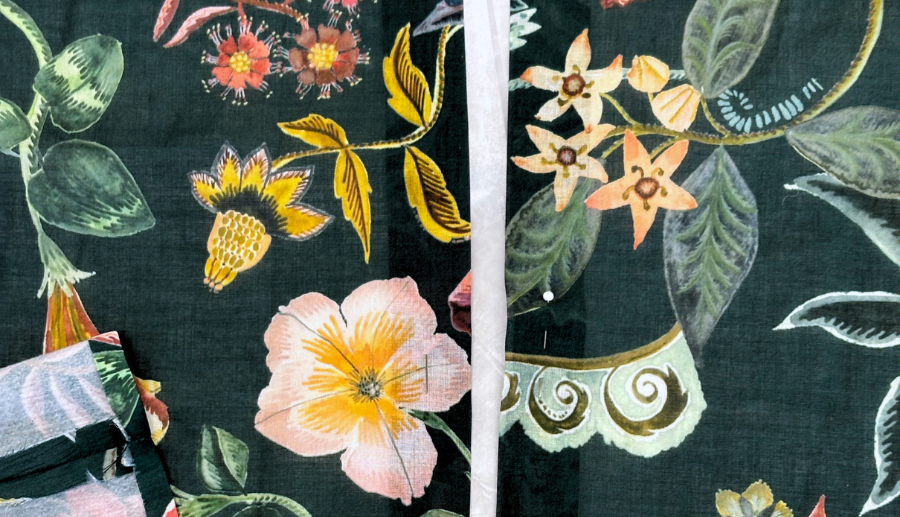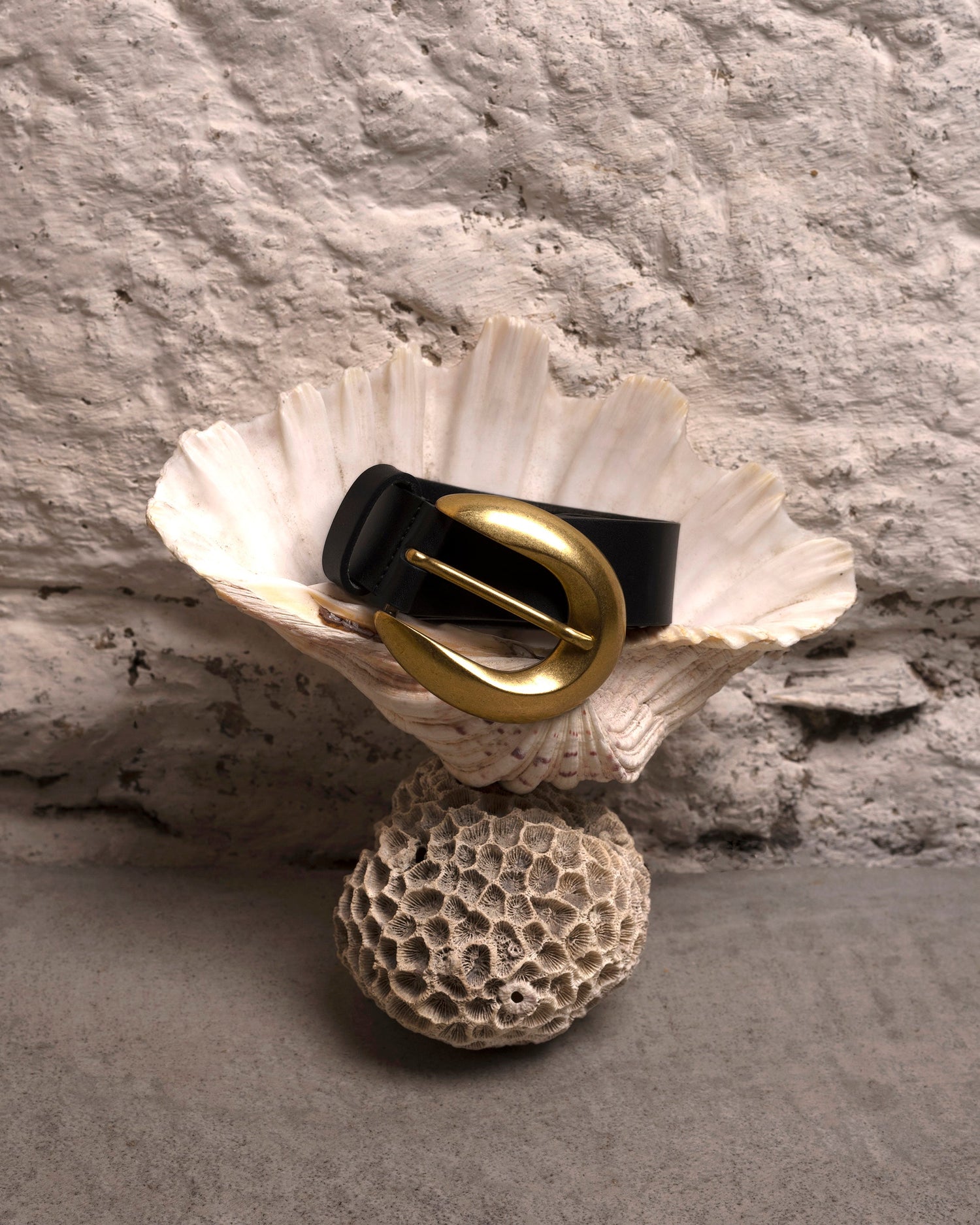While there are many controversies surrounding the composition of textiles used by the fashion industry, we are fully transparent in explaining how we choose them.
At Cotélac, everything usually starts with the raw material. “During trade shows, we go in search of yarns or fabrics that we will select for their visual appearance, their hand and their technical properties,” explains Janelle Cox , assistant in the design office. “Then, we bring in samples and from these, we imagine the pieces that we will be able to create with this or that fiber.”
“It’s a way of working that I had never experienced before working at Cotélac,” explains Céline Wolf, assistant stylist. “It’s true that our approach may seem different from that of other brands,” adds Nathalie Carrera , stylist in the creative office. “This comes from Raphaëlle ’s working method. Trained in Fine Arts, she has always been primarily interested in materials. Of course, before selecting them, we do research beforehand and have a little idea of what we want to do. But they always inspire us enormously.”
*Raphaëlle Cavalli, Creative Director of Cotélac
The points that will make the difference: the treatment of the base yarn, the manufacturer's know-how, the dyeing processes, the final result (washed, textured or even crumpled, etc.). "Depending on the country, the qualities and results are not at all the same," explains Janelle . "Even for artificial fibers, there are significant differences. Those produced in Korea and Japan, for example, have a much more natural feel." These artificial fibers, technically essential for transforming the material into tight folds or shirred weaves, are therefore not all equivalent.
More and more organic and sustainable materials
"We can't just say: let's stop importing fabrics from Asia! Of course, we always try to buy locally. But sometimes it's impossible to find certain equivalent textiles outside of countries where the know-how is unique!" And regardless of the origin, we favor textile blends that contain as few synthetic fibers as possible. "We make sure to meet strict technical constraints while keeping this concern in mind."
“No plastic for the buttons, for example,” explains Céline Wolf, stylist assistant. “We use mother-of-pearl from a cultured Corozo pearl oyster. Less well-known, the latter, also called vegetable ivory, comes from a fruit from ivory palm trees that grow naturally in tropical forests. “It’s very durable and takes color well: it’s much prettier and ages much better than plastic!”
Generally speaking, it can be noted that it is easier today to find organic and sustainable fibers. "I remember that for a long time, they were rare and presented really separately at trade shows. They seemed a little inaccessible," recalls Nathalie . "They are more common today and that's a good thing!" They are therefore increasingly integrated into collections, including for synthetic materials, with the development of textiles from recycling.
"We try to be as vigilant as possible, but it's not always easy," says Nathalie. "Indeed, in this area too, we can have surprises. I remember hearing about a polyester manufacturer that produced its own plastic bottles in order to market a so-called "recycled" textile: a total aberration!"
Bamboo, paper, kapok…
In fact, in the collections, we find very varied and sometimes surprising compositions: paper - appreciated for its dry, fresh appearance and its particular feel - bamboo, the cultivation of which requires four times less water than cotton - kapok (a silky and light plant fiber) ... Others are more common on clothing composition labels but not necessarily better known. Such as viscose, for example: wood or bamboo fibers very practical for providing softness and fluidity...
"But in this field too, there are different brands with their own recipes and products of varying quality," Nathalie emphasizes. "For our part, when it comes to viscose, we like to work with Cupro®." This thread, which looks a bit like silk but is slightly heavier, is a cellulosic fiber whose manufacturing process is environmentally friendly. The Cupro® selected by Cotélac is produced by the Japanese company Asahi Kasei Corporation, the only one to have obtained the OEKO-Tex Standard 100 label and the GRS (Global Recycled Standards), Eco Mark and LCA (Life Cycle Assessment) certifications.
The printing method also makes a difference. "We do everything we can to ensure quality right through to the end," explains Janelle . "Depending on the technical constraints, the most suitable processes are selected. Also, for a design with a multitude of colors, the inkjet process is the most appropriate. For prints that will then be reworked, pleated, or bubbled, the choice will fall on sublimation, a technique with infinite creative possibilities and whose patterns are indelible over time. To fix the colors, sublimation requires having a fabric with more than 50% synthetic fibers, but it allows for unparalleled personalization. "Finally, when technically possible, we favor traditional printing," explains Janelle . "This requires having engraved rollers for each color. It is therefore not suitable for all prints." But in terms of quality - as with sublimation - it allows for designs that will not fade over time because the fibers are completely impregnated with the colors.
To print these materials traditionally, Cotélac has chosen for the past fifteen years to favor French workshops with the aim of keeping them running and preserving the know-how in France. This is the case, for example, of the Ateliers d'ennoblissement textile de La Turdine located in Tarare, near Lyon, or a workshop located in Saint-Savin in Isère, specializing in cylinder engraving for textile printing. Partners who, like Cotélac, have managed to preserve their traditional methods and their production sites in France.





